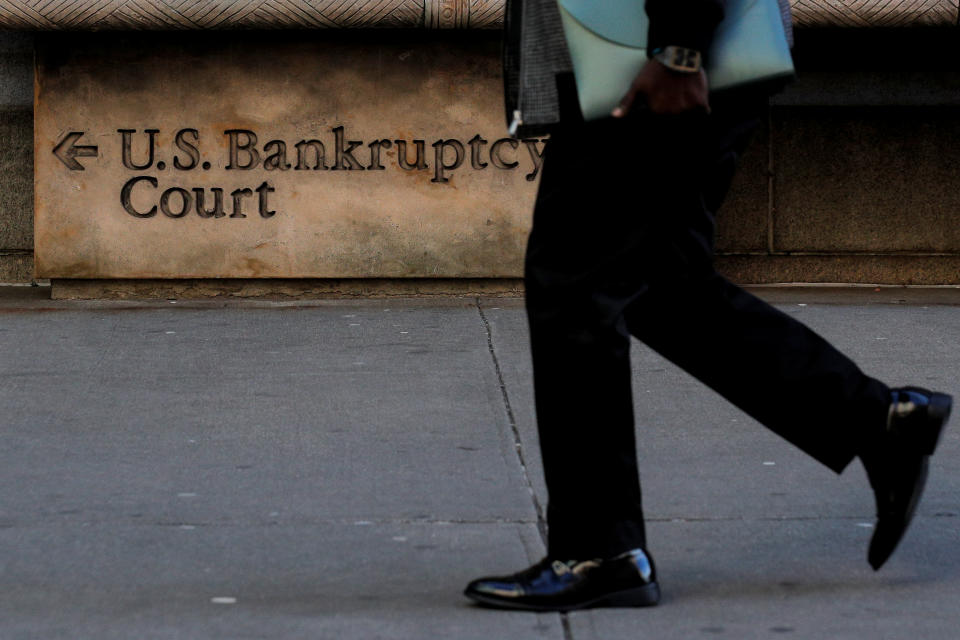New startup aims to help student loan borrowers declare bankruptcy
A new startup is attempting to make it easier for indebted student loan borrowers to declare bankruptcy.
Reset Button — which launches this week— aims to provide a legal platform to connect student loan borrowers who would like to consider personal bankruptcy as an option for relief with lawyers specializing in the field.
Rob Hunter, founder and chief executive officer of the startup, told Yahoo Finance that he saw a need for such a service on both ends.
For the student borrower, making bankruptcy a viable option is “not just the case of getting their debts discharged,” said Hunter. “It’s what people are able to do with their lives without this cycle of debt hanging over them all the time.”
For the lawyers in the consumer bankruptcy space, since “it is not the most technologically-minded industry that's out there, … using technology, we are able to take [administrative] work off the plate of the lawyer that otherwise would stand in the way from just doing what they are good at, which is just practicing law and giving legal advice and serving their clients,” Hunter explained.

Bankruptcy was always technically an option for borrowers
Over the last few decades, it was commonly believed that student loans were not dischargeable in bankruptcy under Section 523(a)(8) of the Bankruptcy Code. But the mood surrounding bankruptcy and student loans has suddenly shifted after a landmark case in the Southern District of New York (SDNY) in January this year.
U.S. Bankruptcy Judge Cecelia G. Morris discharged more than $220,000 of student debt that a navy vet owed, stressing that the way the law currently defined whether or not a person was entitled to debt relief was too strict.
“Over the past 32 years, many cases have pinned on Brunner punitive standards,” Morris wrote, referring to the three-part Brunner test to determine if student loans have caused the borrower to suffer undue hardship. She added that judges sometimes required proof of “hopelessness” — a far more onerous standard than proving hardship.
These interpretations were “applied and reapplied so frequently” and have “become a quasi-standard of mythic proportions so much so that most people … believe it impossible to discharge student loans,” Morris stated. “This Court will not participate in perpetuating these myths … Rather, this Court will apply the Brunner test as it was originally intended.”
The case is being appealed by the creditor at present.

That is not the only successful case recently. In February, a different judge ordered a “partial discharge” for another student loan borrower in the SDNY for their federal student loans.
While the judge didn’t grant a full discharge, they ordered the Department of Education to reduce the borrower’s debt enough such that it will require them to only pay $250 a month (as compared to nearly twice that).
How Reset Button works
The first step in the startup’s process is to evaluate whether bankruptcy was valid for a borrower’s situation, specifically with respect to whether they met the Brunner standard of undue hardship. The upfront fee is listed as $300 on the company’s website.
Then, using data and case law, the company connects that person with a lawyer in their network.
Reset Button didn’t confirm how many lawyers were in their network but said the number is rising.
If the attorney is successful and the bankruptcy case ends with a full or partial discharge, or is settled, then the borrower pays a fee of 12% of the debt that is eliminated. If they aren’t successful, the borrower doesn’t owe anything more than the upfront fee.

While there have been startups and companies that have focused on helping borrowers with student debt, pursuing bankruptcy was a unique approach, John Rao, an attorney with the National Consumer Law Center, told Yahoo Finance.
But that also meant that it was risky. Rao noted that in these bankruptcy cases, student loan lenders and the Department of Justice “fight these cases really hard … [and] go all the way to the Circuit Court … and that’s thousands and thousands of dollars of attorney’s fees.”
“I do think there’s certainly a need,” Rao added. “I’m just skeptical about whether they can make this work.”
Bankruptcy isn’t for everyone
One of the investors in Reset Button, Lambda School’s Jeff Morris Jr., told Yahoo Finance that he recognized the urgency to find a solution to the $1.6 trillion student debt crisis at hand, adding that he found the “simplicity of the product” attractive.
Morris also pointed to the lack of public understanding about the kinds of people who filed for bankruptcy in the first place.
“Personally, I thought people declaring bankruptcy were much older, where someone goes from being on top … to [experiencing] a very large public downfall” such as celebrities, he said in an interview.
For Hunter, the option of bankruptcy represented something more.
“America is a land of opportunity, it is a land of innovation,” he said. “I don't think you can be a country of innovation, without letting people fail.”

But he warned that bankruptcy wasn’t going to be a miracle cure for every student loan borrower out there, particularly when factoring in the effects that it would have on one’s personal finances — from damaging your credit score to being forced to play the entire episode out in public.
“Bankruptcy is the right option for a very acute slice of the population,” he emphasized.
One big reason why cases are successful
The sudden relative uptick in successful student loan bankruptcy cases doesn’t necessarily mean student loan borrowers were going to file for bankruptcy en masse and have their loans discharged, Jason Iuliano, Reset Button COO and an assistant professor of law at Villanova University, told Yahoo Finance.
Iuliano, who has done extensive research in the area of bankruptcy and student loan debt, noted that those filing the adversary proceeding had a far higher rate of success than those who didn’t.
According to his research, between 2011 and 2019, an average of 300,000 student loan borrowers filed for bankruptcy each year. Out of that number, only 573 borrowers had filed adversary proceedings (essentially a civil lawsuit) as well. Most of those were Chapter 7 adversary proceedings.
In 2017, while 241,000 student loan debtors had filed bankruptcy, Iuliano’s research found that only 448 filed an adversary proceeding. And out of that pool, approximately 62% of those cases had obtained some form of debt relief.
Yahoo Finance also spoke to a borrower from North Carolina who had her student debt successfully discharged through a settlement with the Education Department in 2009. Her attorney had also filed for an adversary proceeding in 2007 to support her case.
“A part of the solution has been hiding in plain sight,” stressed Hunter, the Reset Button founder.
—
Aarthi is a reporter for Yahoo Finance. She can be reached at aarthi@yahoofinance.com. Follow her on Twitter @aarthiswami.
Read more:
'A major, major initiative’: California wants to create its own Consumer Financial Protection Bureau
Americans disapprove of DeVos most among Trump administration officials, survey finds
Student loan servicer appeals landmark $220,000 bankruptcy ruling
Read the latest financial and business news from Yahoo Finance
Follow Yahoo Finance on Twitter, Facebook, Instagram, Flipboard, SmartNews, LinkedIn, YouTube, and reddit.

 money
money 
